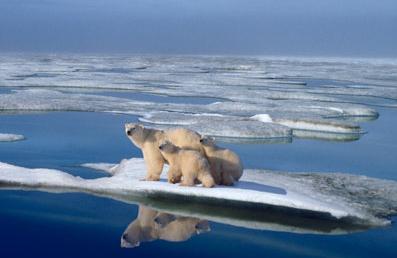The Bulletin asks leaders in environmental law and policy what’s needed to slow global warming.
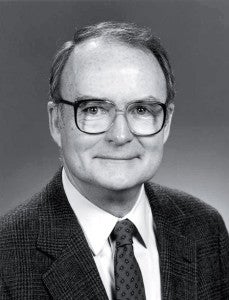
Mostly it will take governments putting in place regimes that will apply throughout the world giving specific targets to reduce CO2 emissions, or we’re just fooling ourselves to think we’re going to get anywhere. This will have to be done rather aggressively to prevent things from getting worse since there’s so much CO2 already in the atmosphere. We’ve done a lot of random acts of kindness around the world to address global warming but haven’t taken any significant steps in law that will give us any real assurance that progress is going to come. And we’re not going to make progress for several decades, no matter what we do now. We’re continuing to put levels of CO2 in the atmosphere which are just going to make the situation worse for probably more than a century. Not only are we not holding our own—it’s still getting worse. We have to begin because it just gets harder the longer we wait.”
William D. Ruckelshaus ’60 served as the first administrator of the Environmental Protection Agency, from 1970 to 1973, and held that post again under President Reagan from 1983 to 1985. He has also served as the chairman of the Salmon Recovery Funding Board for Washington state and as a member of the U.S. Commission on Ocean Policy. He is currently a principal in Madrona Investment Group in Seattle, Wash.
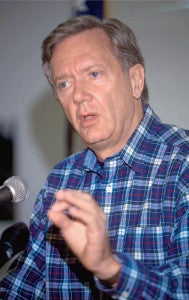
“We need an informed president with the will to lead and a Congress ready to legislate cap and trade legislation to control carbon emissions. Fortunately, if belatedly, there is now a chance that we will soon have both. The Congress has now begun to move legislation. And all three candidates—Senators McCain, Clinton and Obama —have proposed strong cap and trade legislation. Our next president must also end years of obstructionism and take the lead in the upcoming negotiations for a post-Kyoto international agreement. 2009 will be a year for decision and American leadership.”
Bruce Babbitt ’65 was governor of Arizona from 1978 to 1987 and secretary of the Interior during President Clinton’s two terms in office. He has served as president of the League of Conservation Voters and is currently the chairman of the board of the World Wildlife Fund. He is the author of “Cities in the Wilderness: A New Vision of Land Use in America” (Island Press, 2005).
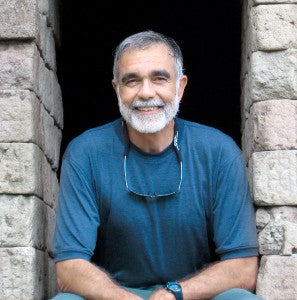
“The simplest way to make big progress is also the most difficult: adopting a carbon tax. The idea is to tax everything that produces carbon emissions, whether it’s coal-fired power plants, automobiles or gasoline. It would be difficult but you would try to calibrate the tax system so that everything you do in terms of the amount of carbon it emits is built into the price of the product. That would minimize government’s role. Economists like that but politicians don’t. I’m a little skeptical that will happen. It’s too bad that conservatives have made taxes such a bad word that even sensible taxes are difficult. There are a lot of other ways that you can make fairly dramatic improvements by requiring a little bit of change for consumers. Perhaps the simplest example is fluorescent light bulbs. Lifestyle changes are in the offing. Are they going to be sudden, wrenching and dramatic? Probably not.”
John Leshy ’69 is a professor at the University of California Hastings College of the Law. Leshy worked for the Natural Resources Defense Council, and served as associate solicitor for energy and resources during the Carter administration and solicitor for the Department of the Interior under President Clinton. He is the co-author of leading casebooks on federal land and resources law and water law.

“States, together and on their own, can reduce CO2 emissions by requiring cap and trade policies and setting a goal of obtaining a certain percentage of their energy from renewable sources. These are examples of the states leading the federal government. But ideally you still need a president who takes this on fully. States, with their tight budgets, can’t make the investments by ourselves in plants and get to scale on distribution. Everybody has a role to play in a new renewable energy economy, including universities and state governments. But with respect to shared infrastructure, whether it’s pipes underground or wires overhead, it has to be in partnership with the federal government. Last year, the federal government invested $28 billion in medical research and $3 billion in energy research, which is down by half from the 1970s. That’s absurd. We need a Manhattan Project for renewable energy production if we’re going to reduce our greenhouse gas emissions. The federal government has got to lead the nation and the world.”
Jennifer M. Granholm ’87 is the governor of Michigan. Prior to her election in 2003, Granholm served as a federal prosecutor, Wayne County corporation counsel and Michigan’s attorney general.
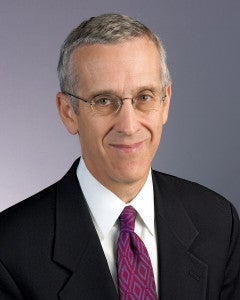
“The next president must take bold action at home and abroad to shift the U.S. and global economies from a high-carbon to a low-carbon base. While action at home is a critical first step, this is a global problem requiring a global solution. The existing U.N. negotiating process is slow and cumbersome, unlikely, alone, to yield the results we need. The next president should pursue a layered diplomacy—seeking consensus on ambitious commitments and policies among a group of core countries, both developed and developing (I have elsewhere called for creation of an ‘E8’); developing a special bilateral strategy for engaging China; and negotiating an overarching agreement at the U.N. level.”
Todd D. Stern ’77 coordinated the Clinton administration’s initiative on global climate change and served as a senior negotiator at the 1997 Kyoto climate change talks. He was a senior White House adviser from 1993 to 1999 and served as counselor to the secretary of the Treasury from 1999 to 2001. He is now a partner at WilmerHale in Washington, D.C., and a senior fellow at the Center for American Progress.
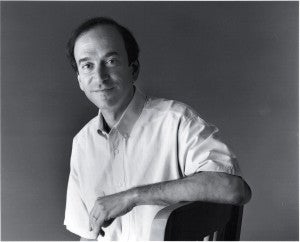
“We need to create an agency or lawmaking process of some kind which is insulated from the natural pressure to undo whatever we do. The reason is fairly simple. We’re talking about putting significant restrictions on people and activities at one place and one time for the benefit of people at a very different place and very different time. It’s very hard to get people to change their behavior, to change their consumption patterns, when the fact is, it won’t make one whit of difference in their lives. This is a time lag we’ve never faced before. Another distributional problem is that parts of the globe that are the greatest source of the problem are parts of the globe that will suffer the least in the short term and may actually feel some short-term benefit to those first 2 degrees in temperature increase. It may actually increase agricultural productivity in parts of Russia, for example. So even if we manage to pass something soon, it’s going to be very important to make it something that can’t get easily undone. The model might be the Federal Reserve Board, which was deliberately removed from the normal political process.”
Richard Lazarus ’79 is a professor at Georgetown University Law Center, where he teaches environmental law. Lazarus served in the Justice Department’s Environment and Natural Resources Division from 1979 to 1983 and as assistant to the solicitor general between 1986 and 1989. He has represented the United States, state and local governments, and environmental groups in 39 cases before the Supreme Court. He is the author of “The Making of Environmental Law” (University of Chicago, 2004), and he co-edited “Environmental Law Stories” (Aspen Press, 2005).
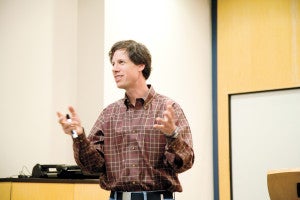
“Climate change cuts across so many parts of the economy, many areas of law are going to have to respond. An obvious one is corporate law: To what extent should future threats to a company’s bottom line be something the board is talking about? Are board members acting on behalf of shareholders if they don’t think about climate change? There are also big issues involving tort law. There have been a handful of tort cases. The best known is the state of California’s suit against the major car manufacturers. It was a public nuisance case arguing that the makers should have known when they produced these cars that [environmental harm] was a likely outcome. All have failed so far, but there are a lot of smart lawyers who see this as the next big thing. The tort system could play a huge role if some of these lawyers start winning cases. If companies perceive potentially huge tort liabilities as a real threat, the boardroom discussion will change. We’re not there yet, but it’s not hard to imagine approaching that stage.”
James Salzman ’89 is a professor of law and environmental policy at Duke University. He has worked in the Environment Directorate of the Organisation for Economic Co-operation and Development and as the European environmental manager for Johnson Wax. He is the co-author of a leading casebook on international environmental law and the practice and policy of environmental law.
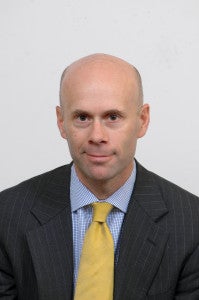
“Lawyers are having the biggest impact right now in shaping the rules that will in a very fundamental way change how we consume energy and other aspects of our lives. Clients understand that something very fundamental is happening both in terms of change in climate and responses, in terms of policy, social and marketplace responses. If you are a corporate lawyer, there are all kinds of questions about how this impacts corporate governance and liabilities. If you’re a litigator, litigation will increasingly be spurred by climate change, especially proactive, policy-driven litigation as an alternative to the political process in order to achieve results. In the financial world, climate change is going to have a significant impact on capital markets, new commodities markets, emission trading markets. There’s an important role for lawyers to develop and execute these new marketplaces, so lawyers on Wall Street will be impacted. The breadth is really stunning, and the role of lawyers is going to be critical.”
Roger S. Ballentine ’88 is president of Green Strategies Inc., a Washington, D.C., consulting firm that assists clients with energy and environmental public policy issues and investment guidance on clean technologies. He served as chairman of the White House Climate Change Task Force and as deputy assistant to the president for environmental initiatives as well as special assistant to the president for legislative affairs under President Clinton. He is a visiting professor at Harvard Law School, teaching energy and climate change policy.
“If you care about endangered wildlife and plant species, you are going to have to figure out the effect of the climate change that’s already going to occur and how to protect habitat and species under stress. We will need to gain access to more land, particularly in the Southwest, in order to stop the death of some species. As it gets hotter and drier, species are going to need to move north some and will not have the same migration corridors. But the U.S. Fish and Wildlife Service has only $900,000 to spend on easements of land for protection of fish and wildlife for the whole country. That’s just not going to do it. We’re going to have to spend some money on that.”
Molly McUsic ’89 is a senior fellow at the Wyss Foundation, which supports land conservation activities in the western United States. She served as counselor to the secretary of the Interior from 1996 to 2000 and as a professor of law at the University of North Carolina, where she specialized in natural resources and property law.
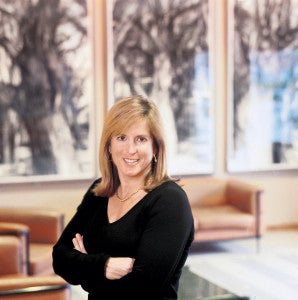
“The profit motive and business opportunities will provide a huge stimulus to change. McKinsey did a comprehensive study that looked at a lot of different solutions, and they showed we can achieve emissions reductions at little or no net cost to the economy. The question of how much will we have to spend misses the main point that underneath it, there are a lot of things we can do that are net positive, that are huge business opportunities to remake the global industrial economy. There are two graphs I love. One shows what happened in California after the state put in place different energy policies after the oil shocks of the 1970s. California was able to achieve something so different —50 percent less electricity usage than the rest of the country. The second graph shows what happened when standards for efficiency of refrigerators were increased. It didn’t mean costs went up or size went down. What happened was that technology improved and consumers and users actually got a much better product at much lower cost overall.”
Joy Covey ’89 is the former chief financial officer and strategist of Amazon.com. She currently is president of the Beagle Foundation, a private environmental group, and is a member of the board of the Natural Resources Defense Council. In 2003, the foundation created environmental law fellowships with the NRDC to provide HLS alumni with two years of training in environmental law. In addition, Covey has funded summer fellowships for HLS students doing environmental work.

“A mandatory pollution cap—with the goal of ratcheting down to 80 percent of current emissions by 2050—is the essential but not sufficient element because a cap alone isn’t going to drive investment in all the low-cost solutions. There are profitable things that we should be doing that we’re not doing. The obvious example is the landlord-tenant problem. The landlord buys the fridge. He doesn’t care what the tenant’s energy bill is. There are all kinds of disconnects like that. We need policies that drive investment in those things that already make economic sense—like energy efficiency and the next generation of fuels and power supply sources that are much lower producers of carbon emissions than what we currently have. The little bit of biofuel we have right now is corn ethanol, but there’s no business plan that makes it competitive with gasoline yet because it’s very energy-intensive to create and you’re only using the kernels. But the next generation, where you use the entire plant, can be competitive. Getting there will require investment in research and development.”
Dale Bryk ’93 is a senior attorney with the Natural Resources Defense Council, where she oversees work on state climate policy. She is also a clinical visiting lecturer at Yale Law School, where she directs a clinical course on environmental protection.
